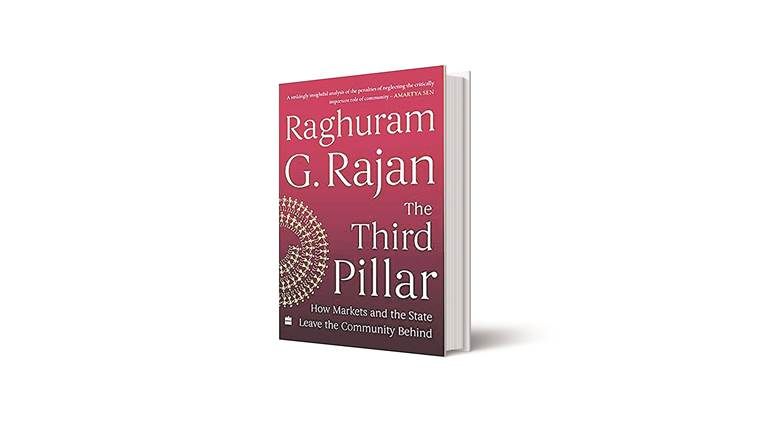Written by Ashok V Desai |Updated: March 10, 2019 2:18:28 pm
Guide Map to a Future World
Rahuram Rajan's new book is a survey of contemporary societies and a search for an economicutopia

The Third Pillar: How Markets and the State Leave the Community Behind
Raghuram Rajan
Harper Collins
428 pages
Rs 799
Raghuram Rajan
Harper Collins
428 pages
Rs 799
Raghuram Rajan has an active mind and a fluid pen; he writes and speaks with great facility. From his chair in Chicago he was lured away by then prime minister Manmohan Singh to serve his country of origin, and after a stint in Delhi, elevated to the top floor of the Reserve Bank of India in Mumbai. That automatically made him persona non grata with the NDA government that followed; its finance minister unceremoniously dismissed Rajan. One might have expected him to have much to say about his Indian experience, but he was virtually silent for almost three years. Now, he has written a substantial book; but it has only 15 references to India, and barely a dozen to his previous work.
He begins with Pilsen, a community close to his residence in Chicago. In 1979, there were 67 murders per 100,000 people in Pilsen; the average in Western Europe was one. Then a resident named Raul Raymundo organised its people. When they saw criminals preparing to strike, they would come out on the streets and crowd them out; they would make multiple calls to the police to come and tackle the gangs. They improved schools. They took over a failing bank and turned it around. They built affordable housing. Over time, they turned a crime-ridden poor area into an attractive community.
This is the focus of Rajan’s book: much has been written about the state and markets, whose functioning is crucial to human welfare, but people’s happiness depends as much on the communities they live in. The social sciences have little to say about how to build ideal communities. Rajan does not have a formula, but he has taken a panoramic view of what seems to work and what does not.
The book is in three parts. The first is about the three pillars, and why the state and markets developed and left communities behind. The second is about the basic problems facing major countries: growing distance between the rich and the poor in developed countries, inconsistency between China’s sophisticated economic structure and primitive political structure, and a private sector dependent on a weak state in India.
The last part is about the changes required to tackle the problems. Rajan is in favour of devolution of powers and functions to smaller entities rather than national governments — essentially, to communities. He does not favour dissolution of states; they should continue to do more or less what they are doing, including law and order, border control, taxation, etc. But social services should be devolved much lower down to communities, and they must be given freedom to experiment.






















No hay comentarios:
Publicar un comentario